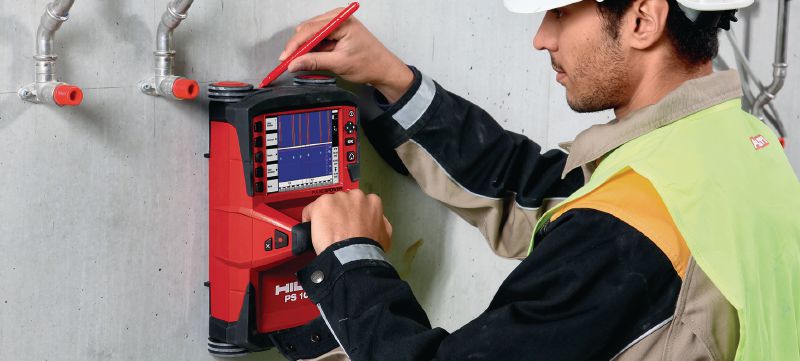RainierGPR Concrete Scanning: The Most Effective Choice for Building Experts
Exploring the Secret Advantages of Concrete Scanning in Building Projects
In the world of modern building and construction practices, the usage of concrete scanning innovation has actually arised as an essential tool for ensuring task effectiveness and structural stability. From boosting precaution to accurately detecting energies concealed under the surface, the benefits of concrete scanning are diverse. The capability to improve job timelines and lower costs while maintaining existing structures is a testimony to the value this technology gives the building industry. As we explore the nuanced benefits of concrete scanning, it becomes apparent that its effect prolongs far beyond surface-level analyses, providing a peek right into the complex internet of benefits waiting to be revealed.
Boosted Safety And Security Actions
Utilizing sophisticated concrete scanning technology enhances precaution on construction websites by giving accurate discovery of prospective dangers concealed under the surface. This technology makes it possible for construction groups to recognize rebar, conduits, post-tension wires, and other blockages prior to excavation or boring, substantially minimizing the threat of crashes. By pinpointing these components exactly, employees can stay clear of damaging crucial structural elements, thus avoiding injuries, delays, and expensive repairs.
Additionally, concrete scanning plays an important duty in making sure the honesty of existing frameworks during growths or renovations. By finding weaknesses, spaces, or degeneration within concrete aspects, engineers can attend to these problems proactively, boosting the general safety and long life of the building. This positive approach not just alleviates the danger of structural failings but additionally decreases the possibility for accidents brought on by unforeseen architectural deficiencies.
In essence, the implementation of concrete scanning innovation functions as an aggressive safety measure that safeguards both construction workers and the structural integrity of buildings, ultimately adding to the general success and effectiveness of building and construction tasks. - RainierGPR Concrete Scanning
Accurate Detection of Utilities
Concrete scanning modern technology assists in specific recognition of underground energies, boosting building site security and performance. Accurate detection of energies is critical in construction projects to avoid costly problems, job delays, and most notably, guarantee the safety of employees and the public. By using innovative scanning technologies such as ground-penetrating radar (GPR) and electro-magnetic induction, building and construction teams can map out the area of hidden pipelines, wires, and various other energies with high levels of precision.

Time and Cost Performance

Concrete scanning technology allows building and construction groups to accurately find rebar, post-tension cables, and other ingrained objects within concrete frameworks. This exact information aids Continue in preventing expensive errors such as unintentional damage to important elements during boring, cutting, or coring activities. Additionally, by determining possible threats ahead of time, the requirement for costly fixings or revamp as a result of problems can be decreased, causing set you back savings for the project.

In addition, the capability to swiftly and precisely discover utilities beneath the surface without triggering any kind of damages not just conserves time however also avoids costly disruptions to existing facilities. Generally, the time and price efficiency benefits of concrete scanning make it an invaluable tool for improving building and construction project monitoring and implementation.
Preservation of Architectural Stability
Preserving the structural stability of buildings and framework is extremely click reference important in making sure long-lasting stability and safety and security. Concrete scanning plays a critical duty in this preservation process by allowing building and construction professionals to recognize prospective threats to the structural honesty of a structure or facilities before they escalate right into significant problems. Via using innovative scanning modern technologies such as ground-penetrating radar (GPR) and electro-magnetic induction, building and construction groups can non-invasively analyze the condition of concrete frameworks, locate rebar, post-tension cables, and other embedded elements, and determine any voids, cracks, or damage within the concrete.
Improved Job Planning
In order to guarantee the successful implementation of construction projects, thorough focus to detail and extensive planning are crucial components that stem from an extensive understanding of the architectural problems identified through concrete scanning. Ultimately, incorporating concrete scanning into the project preparation stage improves sychronisation among group members, fosters aggressive analytic, and contributes to the successful shipment of building projects within budget and timetable restrictions.
Conclusion
To conclude, concrete scanning offers many advantages in building projects. By boosting security actions, precisely finding utilities, boosting time and price efficiency, protecting structural stability, and helping in job planning, concrete scanning shows to be a crucial tool for successful job execution. Its ability to minimize dangers, boost efficiency, and guarantee task stability makes it a vital possession for building experts.
In the realm of modern construction practices, the use of concrete scanning technology has emerged as a critical tool for ensuring project performance and structural integrity.Concrete scanning technology allows building groups to precisely locate rebar, post-tension cables, and various visit our website other embedded things within concrete structures. With the use of sophisticated scanning technologies such as ground-penetrating radar (GPR) and electromagnetic induction, construction groups can non-invasively evaluate the condition of concrete structures, locate rebar, post-tension cable televisions, and various other embedded components, and identify any voids, splits, or degeneration within the concrete.
In order to make certain the successful implementation of building and construction projects, careful focus to detail and thorough preparation are crucial components that stem from an extensive understanding of the architectural conditions recognized through concrete scanning. Eventually, including concrete scanning right into the job preparation stage enhances coordination among group members, cultivates proactive analytical, and contributes to the successful delivery of building jobs within spending plan and schedule constraints.